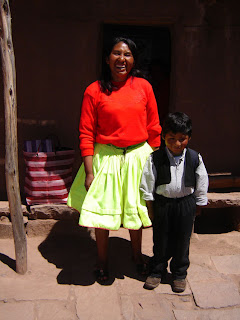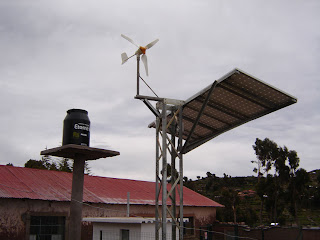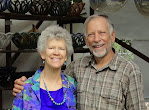 These two good friends are cousins, Natalia age 13 and Juana Luz age 14. Both are our goddaughters, growing up and beautiful.
These two good friends are cousins, Natalia age 13 and Juana Luz age 14. Both are our goddaughters, growing up and beautiful.




The relationship of Tara Miller and Sam Brown with Taquile Island, Lake Titicaca. Includes travel blog: to follow chronologically, start at the bottom of the page and work your way up. -----also check out our pottery at paoniapottery@blogspot.com----
 These two good friends are cousins, Natalia age 13 and Juana Luz age 14. Both are our goddaughters, growing up and beautiful.
These two good friends are cousins, Natalia age 13 and Juana Luz age 14. Both are our goddaughters, growing up and beautiful.




 Edith, possibly the most delightful 3rd grader on the planet, carrying a load of twigs for firewood and her sister, Juana Luz, after a day of stone fence-building around a field.
Edith, possibly the most delightful 3rd grader on the planet, carrying a load of twigs for firewood and her sister, Juana Luz, after a day of stone fence-building around a field. Juana Luz wanted her picture taken. If you look very closely, you can see the 20,000 ft. snowcapped peaks in Bolivia across the lake.
Juana Luz wanted her picture taken. If you look very closely, you can see the 20,000 ft. snowcapped peaks in Bolivia across the lake. The local Friday market, just down the hill from our house, showing school supplies. We bought school supplies for all of our godchildren and some of their siblings (we bought them in Puno: more selection); we're trading woven goods for school supplies for one of the good neighbors.
The local Friday market, just down the hill from our house, showing school supplies. We bought school supplies for all of our godchildren and some of their siblings (we bought them in Puno: more selection); we're trading woven goods for school supplies for one of the good neighbors. Cusi, Sarita and Sam--It's a love affair! (Community Trail building in the background.)
Cusi, Sarita and Sam--It's a love affair! (Community Trail building in the background.) First day of Kindergarden for our grandson, Clever--with his beautiful mother, Ruperta.
First day of Kindergarden for our grandson, Clever--with his beautiful mother, Ruperta. Here's the project in process. The 6-man crew, plus several Taquileños, finished the installation in 4 days. The ground wires were in long deep pits, covered first with sheep dung before the dirt and rocks. Water in the dung makes a better electrical conductor that just dirt.
Here's the project in process. The 6-man crew, plus several Taquileños, finished the installation in 4 days. The ground wires were in long deep pits, covered first with sheep dung before the dirt and rocks. Water in the dung makes a better electrical conductor that just dirt.
 Showing the water tank, windmill (they call it a mariposa, or butterfly) and the 850W of PV panels. The trouble with 27 identical projects is that individual issues aren't considered: How will they get the water up into the tank? Climb a ladder with water on their backs after hauling in from the well 100 meters downhill? The Taquileños suggested a pump, not included in the project. They probably will still need to haul the water up the hill before pumping it up to the tank.
Showing the water tank, windmill (they call it a mariposa, or butterfly) and the 850W of PV panels. The trouble with 27 identical projects is that individual issues aren't considered: How will they get the water up into the tank? Climb a ladder with water on their backs after hauling in from the well 100 meters downhill? The Taquileños suggested a pump, not included in the project. They probably will still need to haul the water up the hill before pumping it up to the tank.
 Five Fujitsu Siemens business notebooks, plus keyboard and mouse (so they'll know how to use them when they come to town and use other computers). Satelite internet is promised to come next year.
Five Fujitsu Siemens business notebooks, plus keyboard and mouse (so they'll know how to use them when they come to town and use other computers). Satelite internet is promised to come next year.



 A fellow solar cooker, Remegio Arnao.
A fellow solar cooker, Remegio Arnao. Remigio Arnao and Tara with our newly finished ULOG solar cooker in his workshop.
Remigio Arnao and Tara with our newly finished ULOG solar cooker in his workshop. ElectroSol in Bellavista neighborhood sells solar PV panels and parts, thermal hot water systems, and this one style of parabolic solar cooker (done for the day).
ElectroSol in Bellavista neighborhood sells solar PV panels and parts, thermal hot water systems, and this one style of parabolic solar cooker (done for the day).
We helped Silvano buy a regulator so he could charge batteries with his 85 watt panel.
Silvano's panel was too big for the regulator we had brought, so we bought one at ElectroSol. See the hot water panel and tank behind us.
March 30 update.
Remigio was all out of "placas offset," used offset printer plates, necessary to make his cookers. We found some at a print shop in Puno and brought them to him, ordered additional reflectors to power up the ULOG. They are smaller than the ones he is used to using from Bolivia, but he is creative and thinks he can make the cookers and reflectors just fine. ¡What a guy!

We had to hire a car and driver to get to this beautiful canyon of eroded rocks, and curious ruins. After our hike, Walter, the driver, took us on an extra drive down the canyon and took this group shot showing some of the rock formations behind us. We are at 4059 m.s.n.m., or 13,317 feet above sea level.
The curious ruins look a lot like graneries in ancient southwestern USA. A local man told me they are houses of people a long long time ago who were extremely short (about 2 feet tall, to judge by their houses). I'll have to do some research....
 Fun in the bubbly warm springs water: Eufraisia, Valeria, Ruperta, Clever y Samuel. It took stong encouragement to get the women loosen their grips on the railing and to allow us to support their heads to float in the mineral-rich water, but they all did it! We all came away feeling relaxed and healed.
Fun in the bubbly warm springs water: Eufraisia, Valeria, Ruperta, Clever y Samuel. It took stong encouragement to get the women loosen their grips on the railing and to allow us to support their heads to float in the mineral-rich water, but they all did it! We all came away feeling relaxed and healed.

